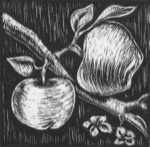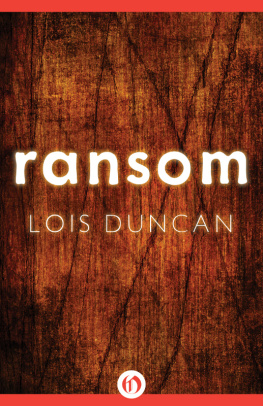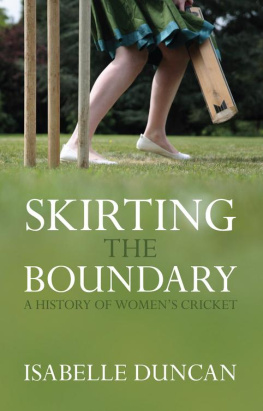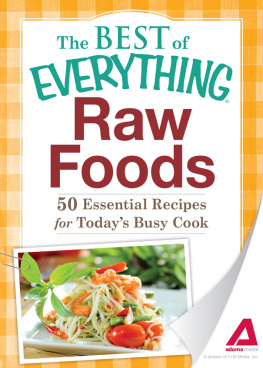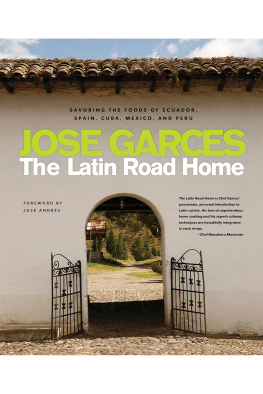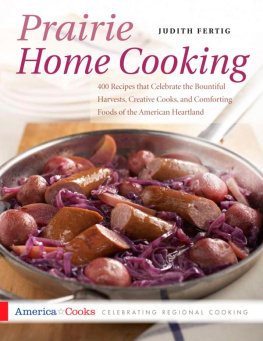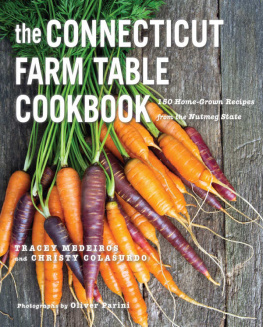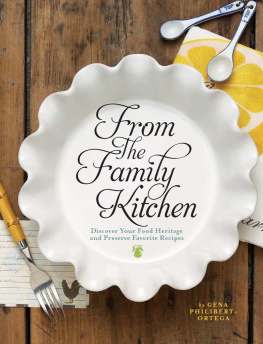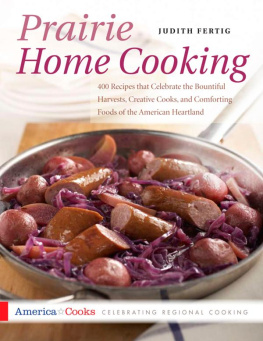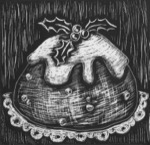The Proof Is in the Pudding
Flour of England, fruit of Spain, Met together in a shower of rain,Put in a bag, tied round with a stringIf youll tell me this riddle Ill give you a ring.
Nineteenth-century riddle
M ost Canadians would not be surprised to learn that the answer to this nineteenth-century riddle is the plum pudding. When we mention the word pudding, we most often envision that round, brown, fruit-filled, steamed, boiled, or baked Victorian dessert, covered with sauce and served during the Christmas season. In reality, not only has the plum pudding much earlier origins, but puddings in one form or another have been with us since Roman times. The Romans stuffed their pudding mixtures into animal intestines and then dropped them into the same boiling cauldron as the meat, and when all was ready they ate the pudding in place of bread.
Puddings have continued to be a combination of several ingredients used to stretch a meal, and because they could be made either savoury or sweet, they could be part of the main course, the dessert, or even comprise a whole meal. What to cook the pudding in was always a dilemma in addition to intestines, hollowed-out vegetables such as potatoes, carrots, and turnips were tried. It was a great innovation when in the seventeenth century the pudding cloth was first used and proven to be an appropriate container for this increasingly popular dish. Puddings could be made of any combination of flour or stale flour products such as bread or biscuits mixed with chopped vegetables, fruits, seasonings, and fat.As puddings spread across Europe, every cultural group changed them to suit their needs and culinary traditions.
It was probably the conquering Danes who introduced the plum pudding to Great Britain in 1013, but in a form unrecognizable to modern Canadians. It began as a broth, developed into a thickened pottage or porridge, and finally, by the eighteenth century, when batter puddings were becoming popular and the pudding cloth was available, took on the form and shape we recognize today. The original recipes called for minced meat (as did many pudding recipes).Through the years, however, the minced meat has usually been replaced by additional fruit.
The British took puddings, whether savoury or sweet, hot or cold, to their hearts and developed hundreds of recipes for them. They ranged from the simple to the elegant, and their names were very descriptive of exactly what the puddings would contain or how they would taste. These three are just a sample:
Bread and Butter Pudding
Get a penny loaf, and cut it into thin slices of bread and butter as you do for tea. Butter your dish as you cut them. Lay slices all over the dish, then strew a few currants clean washed and picked, then a row of bread and butter, then a few currants, and so on until all your bread and butter is in.Then take a pint of milk, beat up four eggs, a little salt, half a nutmeg grated; mix all together with sugar to your taste. Pour this over the bread and bake it for half an hour.You may put in two spoonfuls of rose water. The Art of Cookery made Plain and Easy, Mrs. Hannah Glasse, 1747
Another and perhaps more interesting name for this pudding was the Poor Knights of Windsor, which could be made as above or with the bread soaked in sherry then dipped in beaten egg yolks and fried. A sauce of sherry, sugar, and butter was served over the pudding. Obviously, the knights eating this version were not quite so poor!
A Spoonful Pudding Take a spoonful of flour, a spoonful of cream, or milk, an egg, a little nutmeg, ginger, and salt. Mix all together and boil it in a little wooden dish half an hour. If you think proper you may add a few currants.
The Housekeepers Instructor, William Augustus Henderson, 1790
Plum Pudding
To three ounces of flour, and the same weight of fine lightly grated breadcrumbs, add six of beef kidney-suet chopped small, six of raisins weighed after they are stoned, six of well cleaned currants, four ounces of minced apples, five of sugar, two of candied orange-rind, half a teaspoonful of nutmeg mixed with powdered mace, a very little salt, a small glass of brandy, and three whole eggs. Mix and beat these ingredients well together, tie them tightly in a thickly floured cloth, and boil them for three hours and a half.We can recommend this as a remarkably light small rich pudding. It may be served with German wine or punch sauce.
The Dinner Question, Tabitha Tickletooth, 1860
Symbols to foretell the future were often baked into cakes and puddings. In 1896, Mrs. Humphrey tells us in her Cookery Up-to-Date:
the pudding served on Christmas Day should contain a silver thimble, a gold or silver ring, a large Spanish nut, a large bone button. Whoever gets the money will be lucky throughout the approaching year.The thimble and button portend celibacy during the same period. The nut means wealth.
The settlers arriving in British North America in the late eighteenth and early nineteenth centuries brought their love of puddings with them. To their surprise, they found that the First Nations had long been making a traditional pudding-like dish with cornmeal as a basic ingredient. It eventually became known by many names, including Indian Pudding, Canadian Pudding, and Grandmothers Pudding. This recipe, and the maple syrup that is often served with it, has continued to be a popular dessert on many tables across Canada.
Indian Corn Flour Pudding
2 ounces Indian corn flour
1/2 pint milk
3/4 pint boiling milk
1 egg
sweetening and flavouring to taste
This must not be confounded with corn flour sold in packets, which in some cases is the starch of Indian corn or maize, deprived of much of its nutritive value by the process it undergoes to render it white and smooth. Indian corn flour is the finely-ground flour of maize. Properly prepared, it furnishes a wholesome, digestible and nutritious food. Like oatmeal, it requires to be thoroughly well boiled. Vanilla is the most suitable flavouring for this pudding, but any other may be used. Mix the corn flour smooth in the cold milk and then stir in the boiling milk. Sweeten and flavour. Put into a clean stewpan and stir over the fire until it becomes thick; beat in the egg, put the pudding in a buttered tart dish and bake very slowly for three-quarters of an hour.
The above recipe is from The Dominion Cook Book, published in 1899 and compiled by Anne Clark. This book contains over seventy-five recipes for puddings and a multitude of sauces to serve on them, but it still doesnt match The Bookof Household Management, by Isabella Beeton, 1861, containing over two hundred pudding recipes!
The heyday for the pudding continued well into the twentieth century for Canadians, since puddings were versatile, cheap, easily and quickly made, and designed to fill an empty stomach. To support this interest and demand a variety of pudding moulds and basins were designed. The classic English pudding basin is white earthenware and capable of withstanding the heat of steaming for several hours. Copper and tin moulds were also popular, particularly in the nineteenth and early twentieth centuries, as some of them had a fitted lid that could be used for steamed puddings.
In the twentieth century we were seduced by instant foods. Prime among them have been the custards, jellies, and other easy-to-prepare desserts that masquerade as puddings. If you would like to return to one of the favourite foods of our ancestors, whether they be First Nations or newcomers, take out your mixing bowl and spoon and prepare one of the following time-honoured recipes.

